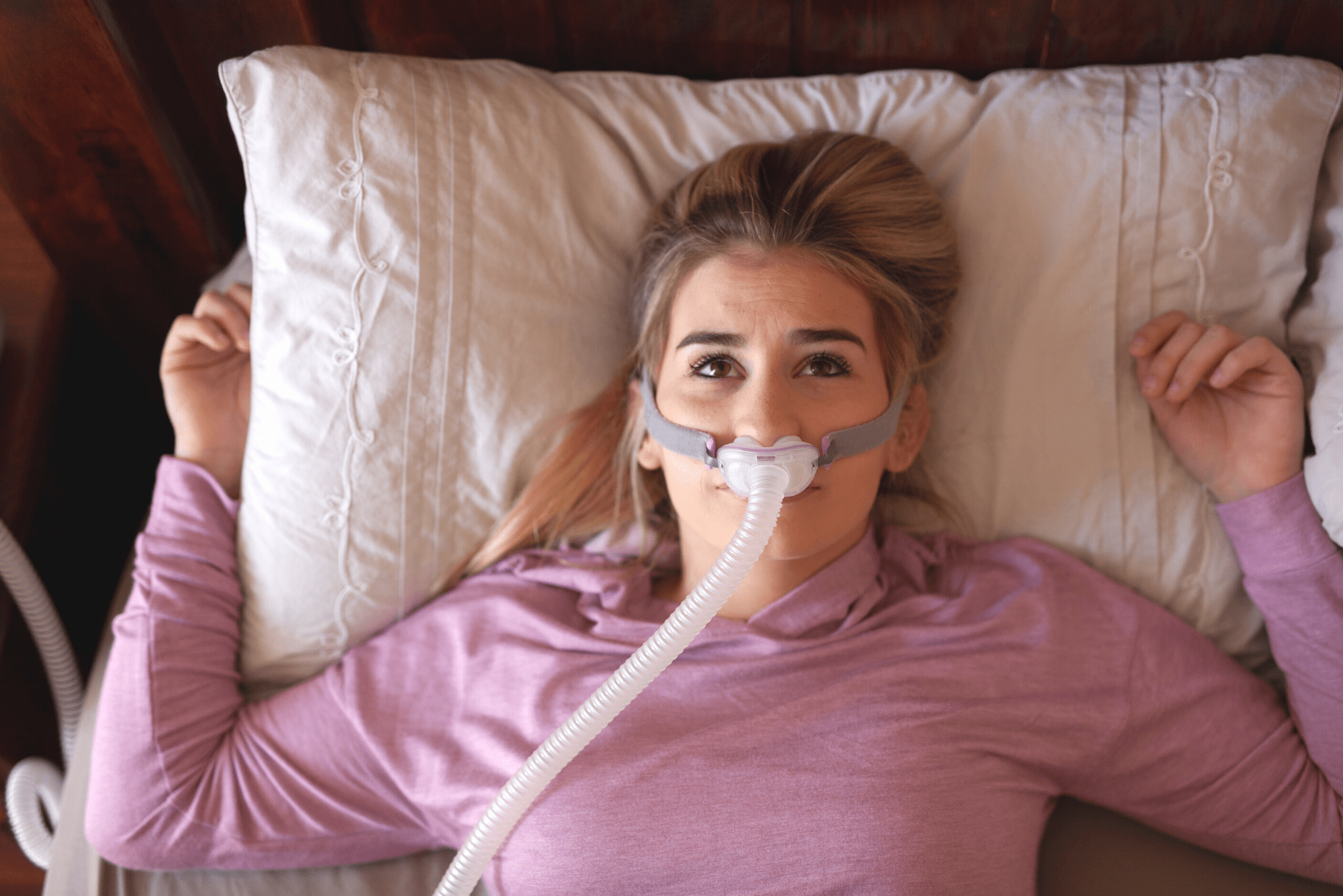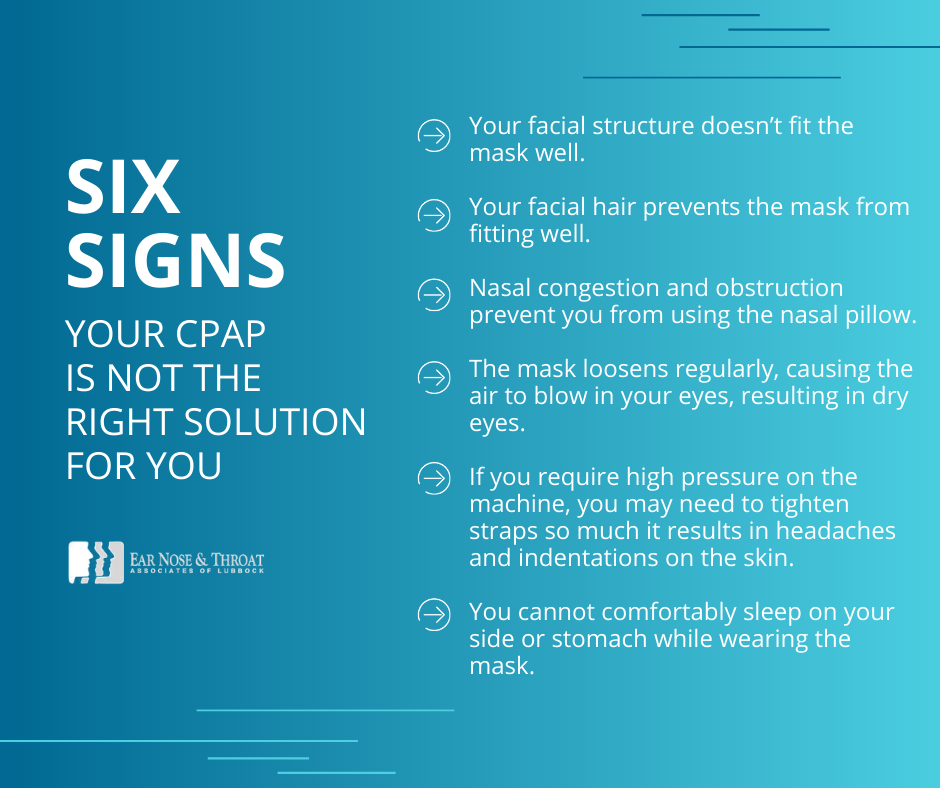Can’t Sleep with a CPAP? Here’s the Solution

While snoring with a CPAP may stop, sleeping with a mask on is tough. It irritates you, you take it off, and bottom line, you’re still not getting good rest. The CPAP just isn’t bearable.
Obstructive sleep apnea is a common problem — it affects more than 20 million Americans and often goes undiagnosed and untreated. The primary acute side effect is fatigue, which may sound minimal, but studies show this fatigue results in a measurable increase in accidents and a significant decrease in the overall health. More long-term effects including congestive heart failure, pulmonary hypertension, strokes, heart attacks, and obesity are also all linked clearly to obstructive sleep apnea.
Obstructive sleep apnea is more than an “I snore so my partner can’t sleep” issue— it’s a serious health concern that needs to be addressed. And now you have more treatment options than just the CPAP machine.
How CPAP Works
Those who have visited their doctor about obstructive sleep apnea have likely been instructed to use a CPAP machine. Historically, it’s the only approach to addressing sleep apnea, and it’s still the most common treatment. The CPAP (Continuous Positive Airway Pressure) works by blowing a steady column of air into your airway, which stents it open.
It’s a great idea in theory, but constant air blowing in your face can make it difficult to breathe… much less sleep.
How to Know if CPAP Is NOT Right For You
While most people stop snoring with CPAP, many can’t keep the mask on and sleep soundly. This 1980s technology still serves some patients well, but for those who need a more comfortable option or seem to still snore with CPAP, we’ve been searching for an alternative.
As ENTs, we’re regularly looking for ways to improve the anatomy of the upper airway to solve the problem. We’ve tried surgical approaches such as:
- If you have large tonsils, remove them.
- If you have a large floppy palate, trim or shorten it.
- If you have a bad septal deviation or nasal obstruction, surgically open it.
These alternative procedures are more invasive than CPAP, and can have great results, but don’t work for everyone. Even so, CPAP isn’t always the right long-term solution either. Some still snore with CPAP and others see little improvement in their sleep because they’re so uncomfortable.

A CPAP machine may not be the right solution for several possible reasons:
- Your facial structure doesn’t fit the mask well
- Your facial hair prevents the mask from fitting well
- Nasal congestion and obstruction prevent you from using the nasal pillow
- The mask loosens regularly, causing the air to blow in your eyes, resulting in dry eyes
- If you require high pressure on the machine, you may need to tighten straps so much it results in headaches and indentations on the skin
- You cannot comfortably sleep on your side or stomach while wearing the mask
If you’ve struggled with CPAP for one of these reasons, we finally have a consistently successful surgical treatment for sleep apnea. With Inspire, you may be able to get off CPAP for good.
How Inspire Works
Inspire’s sleep apnea innovation works by preventing the tongue from blocking the airway. Basically, it’s a pacemaker for your tongue, telling it to move out of the way when you’re trying to breathe.
Inspire is a small device that’s implanted in the right side of the chest, just under the clavicle. This device has two leads:
- One lead is a pressure sensor placed between the ribs. This sensor detects when you’re trying to breath by sensing the pressure on the thorax and the intercostal muscles.
- The other lead stimulates the nerve that controls the tongue. The problem with obstructive sleep apnea is the tongue blocks the air from coming in. The small cuff wrapped around the nerve gives a small electrical impulse that pushes the tongue out of the airway, opens the palate, and creates a remarkably more open airway. Essentially, anytime you try to breath, it moves your tongue out of the way.
Is Inspire the Right Solution For You?
Patients who struggle with CPAP may be eligible for Inspire if they also have:
- Moderate to severe sleep apnea: AHI 15 and above
- BMI within a certain range depending on insurance (typically 32-35)
If you meet the requirements above, we do a drug-induced sleep endoscopy (DISE) to ensure the patient is a good candidate for the procedure before we consider surgery. In DISE, we put the patient to sleep for about five minutes and use a camera to watch the obstruction in the back of their throat to better evaluate if Inspire will effectively solve the problem.
Patients who qualify will appreciate another great benefit as well — almost all insurance companies cover the procedure, including Medicare. The insurance process used to take months, but as companies have come to recognize how effective it is, it typically only takes a few weeks to receive approval.
The Inspire procedure itself takes just 3 hours. It’s FDA approved, and Dr. Cuthbertson of ENT Associates of Lubbock is the only one who offers the procedure between El Paso and Dallas. If you’re ready to move away from your CPAP machine and think Inspire may be the right option for you, contact us to see if you qualify.
Dr. Cuthbertson is a physician at Ear Nose & Throat Associates of Lubbock. He joined the team at ENT Lubbock from Houston, where he was chief resident of the prestigious Bobby R. Alford Department of Otolaryngology at Baylor College of Medicine. He is board certified in Otolaryngology and Head & Neck Surgery and has quickly built a reputation, not only as an extremely skilled surgeon, but as an approachable and compassionate clinician adept in the newest standards and technologies. Learn more about Dr. Cuthbertson.
Categories:








